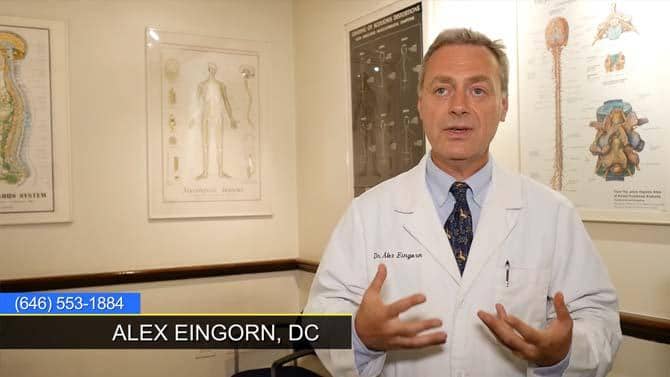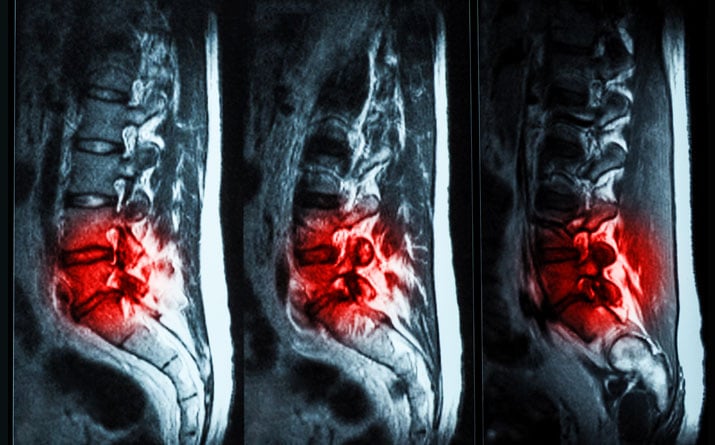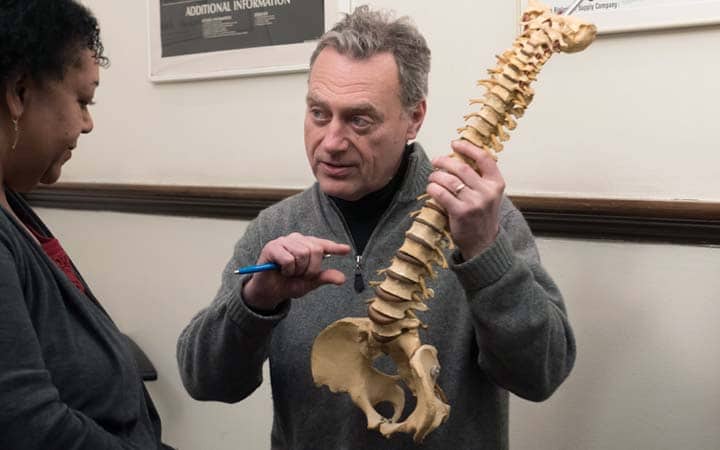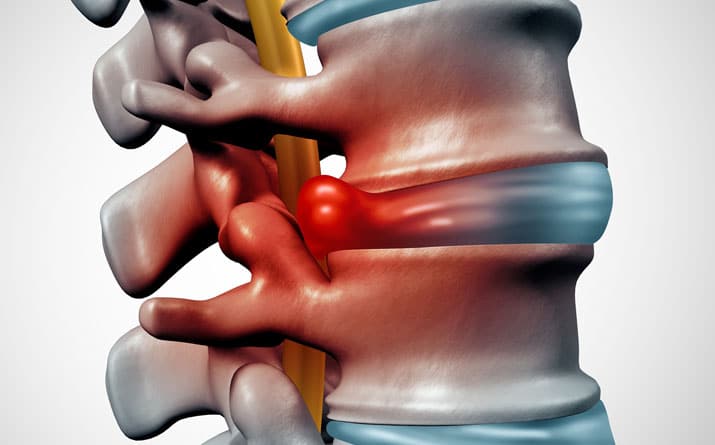What You Should Know About Herniated Discs
The spine, that column of joints housing the spinal chord and spinal fluid, is not indestructible. Between each vertebra is a squishy cushion, preventing bone-on-bone contact. Like other soft body tissues, those cushions, called discs, stiffen with age and can suffer injuries from improper lifting, accidents and disease. When injured, disks can bulge or rupture, putting pressure on the nerves exiting the spinal column and generating pain causing disability, wage loss, and in some cases, ending valued personal relationships. If you have pain radiating into your arms or legs, you may have an injured disc.

What Does it Mean to have a Herniated Disc?
Discs are the donut-shaped cushions between vertebrae that guard against bone-to-bone contact and make the spine flexible. Each disc has a tough outer covering, the annulus fibrosus, and a squishy middle, the nucleus pulposus. There are events that force one or more of the discs between your vertebrae out their normal location and part or all of the nucleus pulposus, the soft center, leaks fluid that causes pain when it touches a spinal nerve root. Friends and family may call the condition a slipped disc or a bulging disc, but your doctor says you have an injured disc. Some herniations never produce life-disrupting symptoms and doctors say that most heal within six weeks. However, some can lead to life-changing chronic pain syndrome and can mean lifestyle changes, employment issues and disability. The aftermath of a disc herniation may demand swift attention if you experience severe pain.

Are Herniated Discs Only in the Lower Back?
There are discs between each vertebral pair, excluding the pair at the base of the skull. The top two vertebrae, at the skull’s base, function differently from those further down the spine. A disc’s name indicates its location on the spine, so discs in the lumbar region (lower back) are lumbar discs and discs in the upper body, but below the shoulders, are thoracic discs. You’ll see them written with the letter indicating their region and a number indicating exact location, so “c-3” means “cervical three”. Numbers preceded by “L” are lumbar locations and those preceded by “T” are thoracic or upper back sites. While a disc herniation generates a set of predictable symptoms, the ruptured disc’s location can cause additional problems. Sciatica, pain running down one or both legs, is common, but whiplash can rupture cervical (neck) discs, causing pain that radiates into the arms and hands. Anywhere the spine has discs between vertebrae is a potential chance for a disc injury.
How Do I Know if I Have a Herniated Disc?
In the absence of injury, the injury’s symptoms can develop slowly or can suddenly appear. While some symptoms are common to all slipped discs, the location of a bulging disc can add discomfort. Tingling, numbness or weakness may be the first symptoms you notice, but people say the pain can be like an electric shock. Additionally, you might suspect you’ve injured a disc if you’ve suffered spinal injuries and have symptoms. You may have muscle spasms that generate crushing pain, in addition to the electric shocks. Irritated nerves develop chronic inflammation creating the burning pain many describe and your back muscles may stiffen, affecting your posture. Disc injuries in the neck can lead to headaches and a thoracic injury can generate chest pain. Many people find the pain wakes them at night. To confirm your suspicions, your doctor can use magnetic resonance imaging (MRI), electromyography, myelography, discography, CT scans and x-rays. After finding your bulging disc, the doctor will discuss your herniated disc treatment options.
Can Chiropractic Care Prevent Surgery for Disc Herniations?
Herniated disc treatment often begins with self-care and you can manage your discomfort with anti-inflammatory medicines, heating pads or cold packs. However, you may need medical massage, traction, physical therapy or steroid injections. The acute pain from an injured disc ebbs within a few weeks, but serious pain warrants a doctor’s examination. Unfortunately, disc herniations do not heal without treatment, but many find relief with chiropractic medicine and spinal decompression. A doctor can provide non-surgical lumbar decompression, employing manipulations that ease painful nerve compression. One New York chiropractor, Dr. Eingorn, has spent 25 years treating spinal injuries and slipped discs.
Lumbar decompression employs traction to gently stretch the spine and entails lying on a table with a bottom half that slides back and forth. A therapist or chiropractor places an attached harness around your hips and the table repeatedly tugs and releases for between 30 and 45 minutes. Doctors believe that, unlike medication, rest and exercise, decompression therapy generates negative intradiscal pressure that pulls the disc back into place and restores free circulation, restoring unimpeded nutrient delivery to the disc. You’ll visit the doctor’s office for more decompression treatments over the following four to six weeks.
Schedule a Consultation with Dr. Eingorn Today
Your back injury needn’t cause endless pain. With careful adjustments, a chiropractor like Dr. Eingorn. He specializes in disc injuries and is a pioneer of non-surgical lumbar decompression techniques. When you are ready for spinal decompression and the relief it provides, You can call him at (212) 956-5920.

Alex Eingorn, DC and Better Health Chiropractic (https://betterhealthchiropracticpc.com) provide non surgical treatment for herniated discs for patients from these areas of NYC: Manhattan, NYC, Midtown NY, Battery Park City NY, Financial District NY, TriBeCa NY, Chinatown NY, Greenwich Village NY, Little Italy NY, Lower East Side NY, NoHo NY, SoHo NY, West Village NY, Alphabet City NY, Chinatown NY, East Village NY, Lower East Side NY, Two Bridges NY, Chelsea NY, Clinton NY, Gramercy Park NY, Kips Bay NY, Murray Hill NY, Peter Cooper Village NY, Stuyvesant Town NY, Sutton Place NY, Tudor City NY, Turtle Bay NY, Waterside Plaza NY, Lincoln Square NY, Manhattan Valley NY, Upper West Side NY, Lenox Hill NY, Roosevelt Island NY, Upper East Side NY, Yorkville NY, Hamilton Heights NY, Manhattanville, Morningside Heights NY, Harlem NY, Polo Grounds NY, East Harlem NY, Randall’s Island NY, Spanish Harlem NY, Wards Island NY, Inwood NY, Washington Heights NY



